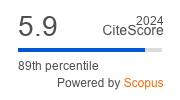Article | Open Access
Structures of the Public Sphere: Contested Spaces as Assembled Interfaces
| Views: | 4924 | | | Downloads: | 3494 |
Abstract: This article updates certain aspects of the normative notions of the public sphere. The complex ecosystem of social communications enhanced by mobile media platform activity has changed our perception of space. If the public sphere has to normatively assess the expected conditions for public debate and for democracy, the assemblage of devices, discourses, infrastructures, locations, and regulations must be considered together. The literature reviewed about the public sphere, spaces, and geographically-enabled mobile media leads this article to the formulation of a concept of the public sphere that considers such assemblage as an interface. As an empirically applicable update to the definition of the public sphere the text offers a model that helps analyze those factors considering how they shape the communicative space in four modes: representations, structures, textures, and connections. These modes consider the roles played by assemblages of devices, infrastructures, and content in delimiting the circulation of information. The second part of the article illustrates the model with examples from previous research, paying particular attention to the structures’ mode. The dissection of qualitative, quantitative, and geodata generated by digital and (visual) (n)ethnographic tools reveals three subcategories for the analysis of structures of space: barriers, shifts, and flows. The structures effectively enable/disable communication and define centers and peripheries in the activity flows. The contribution of this article is, thus, conceptual—it challenges and updates the notion of the public sphere; and methodological—it offers tools and outputs that align with the previously developed theoretical framework.
Keywords: assemblage; geomedia; interface; mobile media; public space; public sphere; structures of space
Published:
© Cornelia Brantner, Joan Ramon Rodríguez-Amat, Yulia Belinskaya. This is an open access article distributed under the terms of the Creative Commons Attribution 4.0 license (http://creativecommons.org/licenses/by/4.0), which permits any use, distribution, and reproduction of the work without further permission provided the original author(s) and source are credited.


